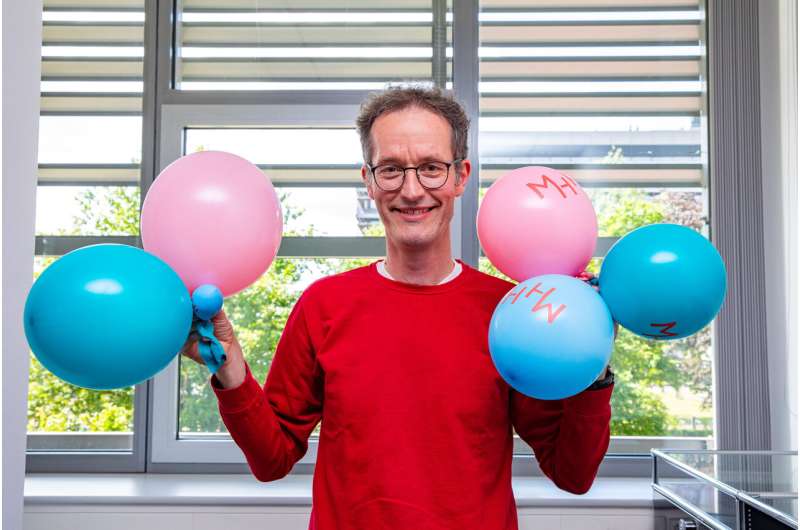Table of Contents
Artificial ventilation can save lives, but it also puts pressure on lung tissue. If the lungs are pre-damaged, pressurized ventilation can even have undesirable effects. This is especially true of patients with acute respiratory distress syndrome (ARDS). This is because when trying to keep the lungs open and allow further gas exchange, the pressure due to an overstretch of still intact lung areas can cause additional damage.
However, even less pre-damaged lungs, in which a smaller amount of pulmonary vesicles collapse and are no longer functional, may be susceptible to mechanical ventilation. In these collapsed alveoli, no gas exchange of oxygen and carbon dioxide takes place between the incoming air and the venous blood.
Medicine speaks of these mini-damages as micro-athletes. They lead to the fact that the inhaled air cannot be distributed evenly to all the pulmonary vesicles. As a result, the neighboring alveoli are excessively stressed.
A research team led by Professor Dr. Lars Knudsen, a specialist in internal medicine and pulmonology at the Institute of Functional and Applied Anatomy at the Medical University of Hannover (MHH) has now found that even small accumulations of collapsed alveoli, which are already clinically incomprehensible, are sufficient to trigger ARDS under artificial ventilation. In addition, the researchers showed for the first time that the damage occurring under ventilation occurs in the immediate vicinity of existing clusters of collapsed alveoli.
As a result, the clusters grow and become clinically significant. The findings were published in the American Journal of Physiology-Lung Cellular and Molecular Physiology.
Mechanical stress is increased
When we breathe in, air flows into our lungs and into the air sacs. Alveoli increase in size by changing their shape and unfolding. In a gas exchange, oxygen from the respiratory air enters the bloodstream and carbon dioxide from the blood is exhaled again. Ideally, all alveoli unfold evenly and stress-free.

If some lung vesicles are damaged by illness or injury, they collapse and fall out. Because the pulmonary vesicles are made up of many folds like a flaccid balloon and are connected to each other like a fine mesh of rubber bands, the shrunken alveoli exert tensile forces on their neighbors and overstretch them.
“This mechanical stress is apparently further increased during artificial ventilation and permanently damages the walls of the pulmonary vesicles, which are only a few thousandths of a millimeter thin, ” explains Professor Knudsen.
Tiny clusters spread
In a mouse model, the research team provided experimental evidence that clusters of collapsed alveoli are a crucial driving force behind the formation of ventilator-induced ARDS.
“We found mild lung damage in the animal model,” explains Professor Knudsen. The animals were clinically inconspicuous, had normal oxygen saturation and inconspicuous lung function.
“The only striking finding was that at the end of the exhalation phase, about 30% of the pulmonary vesicles had collapsed,” he said. These collapsed alveoli formed clusters with a radius of about 50 to 60 micrometers, comparable to the thickness of a human hair.
In order to reopen the collapsed lung vesicles, very high pressures were required, which are not normally used during ventilation. If, under general anesthetic, these lungs were ventilated with a normal volume of breath, the animals initially had relatively stable lung function. After four to six hours of prolonged ventilation, lung function then deteriorated very rapidly, and there were isolated lung failure.
“We could see under the microscope that the clusters of collapsed alveoli had grown larger and had almost doubled their radius,” says the pulmonologist. The lungs had, on average, lost more than a quarter of open lung vesicles due to progressive alveolar collapse near existing micro-athletes.
Search for markers of ARDS risk
“Our data show that alveols become unstable near micro-athletes, and collapsed lung vesicles act as germ centers to further spread the damage in the alveolar epithelium,” says Professor Knudsen. Detecting this damage early is difficult because it is not reflected in the usual lung function measurements.
Next, the researchers want to use artificial intelligence to search all the measured data for possible markers that indicate a risk of a fatal course under ventilation.
Since both the structure of the mouse lungs and the mechanisms of breathing have parallels with our lungs, the results can be transferred. However, the question remains, under which conditions artificial ventilation damages the lungs the least.
More information:
Richard Zimmermann et al, Low-volume ventilation of preinjured lungs degrades lung function via stress concentration and progressive alveolar collapse, American Journal of Physiology-Lung Cellular and Molecular Physiology (2024). DOI: 10.1152/ajplung.00323.2023
Provided by
Medizinische Hochschule Hannover
Citation:
Research team finds clusters of collapsed alveoli trigger ARDS under artificial ventilation (2024, July 2)
retrieved 2 July 2024
from https://medicalxpress.com/news/2024-07-team-clusters-collapsed-alveoli-trigger.html
This document is subject to copyright. Apart from any fair dealing for the purpose of private study or research, no
part may be reproduced without the written permission. The content is provided for information purposes only.

